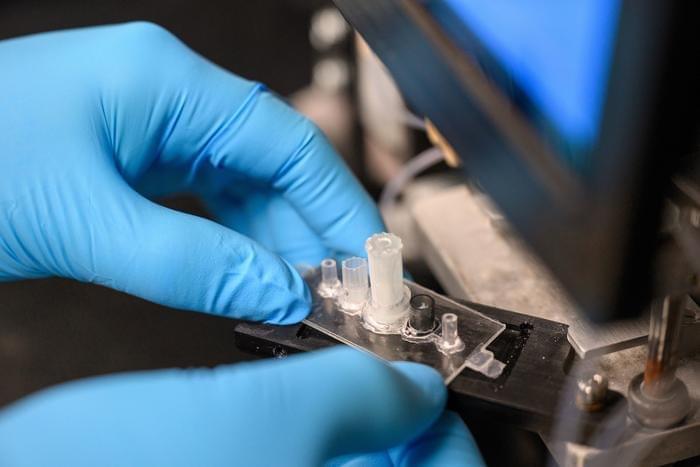The best solar company in Australia just installed my new solar system. Check them out here: https:…
Get the latest international news and world events from around the world.
Mysterious New Organism Found in Mono Lake Could Rewrite the History of Life
Berkeley scientists have discovered a new choanoflagellate species in Mono Lake that forms multicellular colonies and hosts a microbiome, offering new perspectives on the evolution of multicellular organisms.
The salty, arsenic-and cyanide-laced waters of the Eastern Sierra Nevada’s Mono Lake is an extremely hostile environment. Aside from the abundant brine shrimp and black clouds of alkali flies, very few organisms live there.
Now, researchers from the University of California, Berkeley have discovered a new creature lurking in the lake’s briny shallows — one that could tell scientists about the origin of animals more than 650 million years ago.


D-Wave’s Quantum Computer Serves as Brains Behind Study That Connects Neural Activity to Academic Performance
The study, published by a multi-institutional team of researchers…
Researchers used D-Wave’s quantum computing technology to explore the relationship between prefrontal brain activity and academic achievement, particularly focusing on the College Scholastic Ability Test (CSAT) scores in South Korea.
The study, published by a multi-institutional team of researchers across Korea in Scientific Reports, relied on functional near-infrared spectroscopy (fNIRS) to measure brain signals during various cognitive tasks and then applied a quantum annealing algorithm to identify patterns correlating with higher academic performance.
The team identified several cognitive tasks that might boost CSAT score — and that could have significant implications for educational strategies and cognitive neuroscience. The use of a quantum computer as a partner in the research process could also be a step towards practical applications of quantum computing in neuroimaging and cognitive assessment.
New system extracts 264 gallons of drinking water daily from thin air
Aquaria’s line of atmospheric water generators can generate affordable drinking water from moisture in the air.

Solar power at US schools surges, growing fourfold over the last decade
Since 2014, solar capacity at K-12 schools has more than quadrupled across the US, according to a new report from clean energy nonprofit Generation180.
The “Brighter Future: A Study of Solar on K-12 Schools” report highlights that over 6.2 million students – more than 1 in 9 – now attend schools powered by solar. In 2023 alone, more than 800 schools added solar panels, meaning that at least one school went solar every single day during the 2022–23 school year.
“The benefits of solar energy are now reaching a broad range of schools across the country, including those in under-resourced communities that stand to gain the most from the cost savings and educational opportunities that solar technology provides. We want all schools and communities, regardless of their size, geography, or wealth, to have access to affordable, clean energy,” says Tish Tablan, the report’s lead author and senior director of Generation180’s Electrify Our Schools Program.

New technique shows promise for mass fabricating an exotic quasi-1D material
Researchers have fabricated a quasi-one-dimensional van der Waals zirconium telluride thin film, which is a form of a substance that has long promised advances in quantum computing, nano-electronics and other advanced technologies. Until now, it has stumped scientists who have tried to manufacture it in large-scale quantities.
Telomere Length Test #16: My Best Data Yet
Enjoy the videos and music you love, upload original content, and share it all with friends, family, and the world on YouTube.

Rare Milky Way star cluster is packed with red supergiants 1 million times brighter than the sun
“There are many open clusters in the galaxy. However, not all open clusters have the same level of interest to astronomers,” Ignacio Negueruela, a researcher at the Universidad de Alicante who was part of the team behind the discovery of supergiants in Barbá 2, told Space.com. “Clusters rich in red supergiants are very rare and tend to be very far away, but they play a crucial role in understanding key aspects in the evolution of massive stars.”
The intimidating size and power of supergiants means these monster stars burn through their nuclear fuel much faster than stars like the sun. Whereas our star will exist in its main sequence lifetime for around 10 billion years, supergiants are estimated to last just a few million years.
The short lifetime of supergiants means that while open clusters like Barbá 2 are common, with over 1,100 already discovered in the Milky Way alone, finding one packed with red supergiants is extremely rare.

NASA’s Moon Launcher Is in Big Trouble
Reports that each of NASA’s Artemis launches could cost as much as $4.1 billion…
“Costs going up faster than the tower,” self-described internet rocket scientist Scott Manley joked at the time.
NASA used its Mobile Launcher 1 for its inaugural — albeit uncrewed — Artemis mission in late 2022. According to a 2020 audit, the tower, which was originally built for NASA’s canceled Constellation program, cost $234 million to develop.